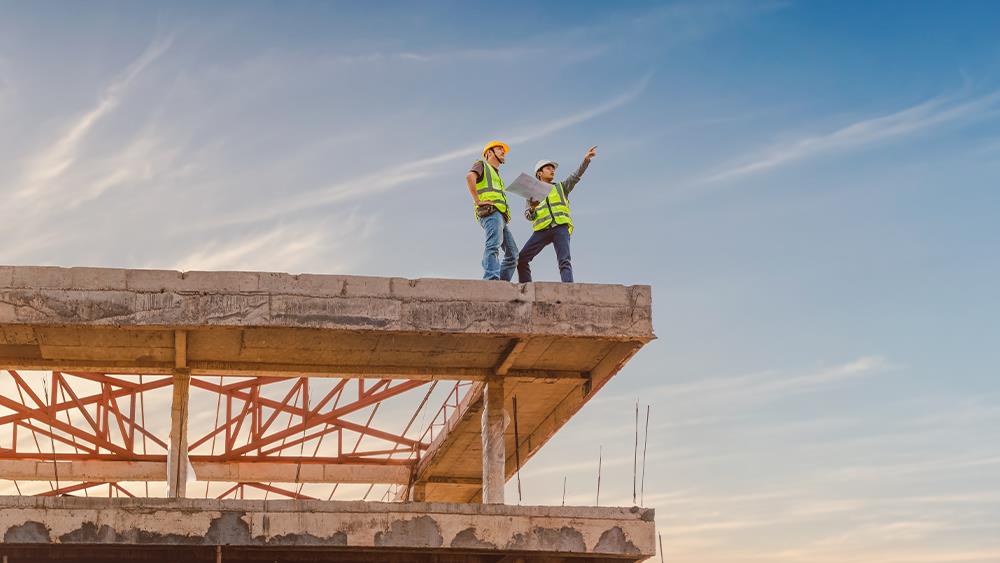

The Construction Products Association’s Winter forecasts show that UK construction output is set for a gradual recovery this year and next, following two challenging years that have particularly affected the two largest sectors – private housing new build and repair, maintenance and improvement (rm&i).
Total construction output is expected to grow by 2.1% in 2025 and 4.0% in 2026. The recovery for this year is a downward revision compared with 2.5% growth expected in the autumn forecast, given the prospect of slower economic growth, higher inflation for longer, and fewer interest rate cuts than previously expected.
In private housing – the largest construction sector – an uptick in mortgage interest rates at the end of 2024 suggests that the housing market recovery and demand for new build housing will be slower and more uneven in the first half of 2025.
Much will depend on how quickly mortgage rates start to fall again and the impact this has on the house builders’ key spring selling season.
The publication of the revised National Planning Policy Framework could ease one of the most-cited supply constraints and boost house building over the longer-term, but aside from increasing uncertainty over the strength of demand, house builders continue to cite an array of other issues adding costs and/or delays: water and nutrient neutrality, Biodiversity Net Gain, revised building regulations, the rise in payroll taxes and submissions to the Building Safety Regulator for those involved in high-rise residential construction.
Overall, private housing output is forecast to rise by 6.0% in 2025 and 8.0% in 2026 but the risks remain weighted to the downside, especially in the first half of this year.
Private housing rm&i is the second-largest construction sector, and, with households now experiencing sustained real wage growth and slight falls in interest rates, an expected rise in home moves should drive home improvement projects, although this is most likely to occur in the second half of 2025.
Continued house price growth, combined with households potentially feeling more comfortable using their savings on home improvement, should also help lead to private housing rm&i gradually increasing in 2025 H2 and into 2026.
In addition, homeowner spending on energy-efficiency retrofit and solar photovoltaic work remains strong, and is also benefitting from improved delivery of government schemes, such as ECO4, the Great British Insulation Scheme (GBIS) and the Boiler Upgrade Scheme (BUS).
Sector output is forecast to grow 3.0% in 2025 with a further rise of 4.0% in 2026.
In infrastructure, which is the third-largest construction sector, activity remains strong on major projects such as Hinkley Point C and HS2. In addition, energy infrastructure activity continues to grow from strength to strength as wind farm activity resumes and increases in capital expenditure in the water sub-sector to deal with high-profile water quality issues leads to activity ramping up from 2026.
The key government announcement affecting infrastructure is a short-term £500 million additional injection of funding for potholes and roads maintenance in the Autumn Budget. However, five major road schemes were simultaneously cancelled and although the Lower Thames Crossing is anticipated to be given the go-ahead, it will fall outside of the forecast period.
Overall, infrastructure output is expected to rise by 1.4% in 2025 and 4.1% in 2026.
Commenting on the Winter Forecasts, Rebecca Larkin, CPA Head of Construction Research, said: “After a difficult couple of years, it is a welcome return to growth forecast for the construction industry in 2025 and 2026, although the recovery is set to be more gradual than in our forecasts before the Autumn Budget.
"With stubborn inflation meaning interest rates are unlikely to be lowered as much as previously expected, it adds fresh uncertainty to the point at which potential home buyers and existing homeowners will feel comfortable and confident enough to proceed with their largest spending decisions and get a sustained recovery in new house building and rm&i underway.
“This recovery is expected to occur in the second half of the year, combining with the current areas of growth such as energy-efficiency improvements, commercial refurbishments and energy and major infrastructure projects to establish a broader recovery across construction as the year progresses.
"The government will also play a key role in the industry’s longer-term recovery, through setting long-term funding allocations in the Spending Review in June, delivering construction programmes for new schools, hospitals and prisons, and maintaining promised levels of public investment within the bounds of its fiscal rule.
"As the government came to power on a statement that it was pro-business, pro-investment and pro-growth, the next few years will show whether this is true or whether it was merely rhetoric.”